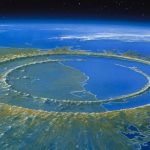Family Tree
Thanks to the invention of home DNA tests, people are able to learn more about their family tree. Many people find something surprising in their family tree, but often, the charts cannot go past a couple of hundred years. In Australia, a group of scientists tried to dig deeper than that. During their research, they made a shocking connection between something found at a famed archaeological dig and a genetic mystery. These experts uncover ancient DNA that may prove one species is a close relative of humans.
James Watson and Francis Crick
When James and Francis discovered the double helix structure of DNA, we have become obsessed with dissecting our own genetic material. Over time, we have learned more than ever about our true identities. Alan Cooper, the director of the Australian Centre for Ancient DNA, became more and more fascinated with DNA. He and his colleague, Dr. Joao Teixeira, started studying the earliest days of humans and uncovered something incredible. The found out that we have some unexpected ancestors.
The Liang Bua Cave
The Liang Bua Cave is located in Indonesia. Over the years, artifacts have been found in the cave. Deep in the soil, experts found lost items from a primitive civilization, and it is one that most people have never heard of. The first discovery found in the cave was teeth and other skeletal fragments. Scientists unearthed them in 2003. They appeared to be similar to that of a human, but something was different. They seemed too small to have come from a human. Scientists believe that they could be linked to a species close to humans that existed a very long time ago. The scientists thought that they found a “missing link.”
Thousands Of Years Ago
We all know that there was a time when creatures who are now extinct lived. The woolly mammoth, the saber tooth tiger, and dinosaurs are just a few. There were also people back then who looked a lot like modern-day humans. They were known as Homo sapiens, and they first appeared in Africa about 300,000 years ago. As the culture developed, they moved into Europe and Asia. In these areas, they encountered archaic people, who were close to modern-day humans genetically.
Homo Floresiensis
After examining the remains found in the cave, Alan, Joao, and their team from the University of Adelaide determined that what they found came from a more diminutive species called Homo Floresiensis. The often referred to the people as hobbits. They thrived in parts of Asia as recently as 50,000 years ago, before dying out. These “hobbits” are not as unfamiliar as you may think.
Neanderthal
Scientists say that the hominin is in our Ancient DNA. Now that we are in the midst of an ancestry trend, we are learning more about where we came from. Many people find that they are up to 2 percent Neanderthal. Some have physical features that support this finding. The people with this ancestry have a prominent brow ridge, which is the biggest giveaway. More subtle qualities like long-term depression as also associated with this species.
More Surprises
This wasn’t the only surprise. Scientists have also located other extinct hominin genes in modern humans. There is a good chance that these species have been lost over the years, but Allen and Joao wanted to take a closer look at the “hobbits.” They put a modern mystery gene called EH2 under the microscopes and found that it matched the bones found in the Liang Bua cave. They also found that many people with this gene were living in Southeastern Asia.
The Connection
When the researchers made the connection, it blew them away. Not only did they locate another ancestor to modern man, but their DNA testing also proved that Homo sapiens once interacted with related species much more than we initially thought. After dating the remains and the basic tools found in the cave, they determined that it overlapped human existence. These people are just as close to us as the Neanderthals.
Producing Offspring
Their research shows that Homo sapiens produced offspring with these hobbits, and their legacy lives in many people’s DNA. It is believed that there are up to three unknown hominins who interbred with humans. Both Allen and Joao believe that they are just one expedition away from cracking the genetic code and learning all there is to know about the hobbits and other lost species.
More Answers
Thanks to technology, we have been able to learn more about where we came from than ever before. If history tells us anything, technology will continue to advance, which means that it is only a matter of time before scientists get all of the answers that they are looking for about the earliest form of humans.


